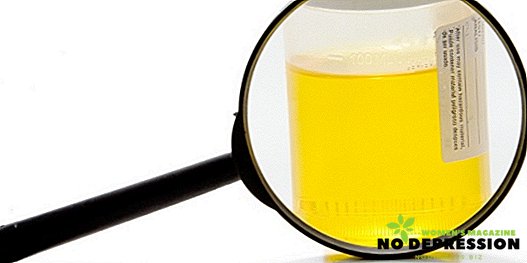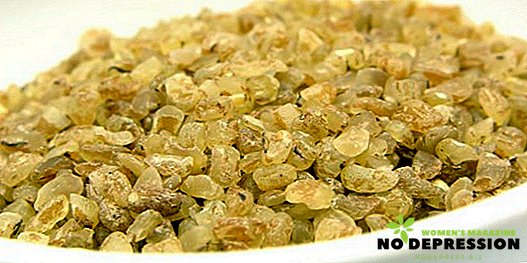Using an analysis of the level of leukocytes in the urine, it is determined whether there is an inflammatory process in the child’s body or not. These cells perform a protective function. Therefore, when pathogens enter the blood, their level begins to rise.

A high white blood cell count does not always talk about the disease, but this does not happen often. Therefore, if the result of the analysis showed a deviation from the norm, it is necessary to examine the child.
The value of leukocytes in the urine of a child
Leukocyte production occurs in the bone marrow. They penetrate into tissues and organs and will be able to concentrate in places of inflammation. White blood cells can enter urine, but in small quantities. Ideally, if they are not detected at all, small values are acceptable.
With an increase in their number, the doctor may suspect the presence of a pathological process.
The heavier the flow, the more leukocytes. If there are more of these cells in the urine than it should be, then the child is diagnosed with leukocyturia.
What level of white blood cells in the urine of a child is considered normal
Normal indicators depend on the age, general condition of the child’s body and gender. The number of cells is determined after centrifugation of the urine. Examine the precipitate, which is obtained after the procedure.

The following values are considered as normal:
- 8-9 in an infant. This is due to the low functional activity of the kidneys. Boys should have fewer leukocytes;
- Boys range from 5 to 7 from a year, and from 8 to 10 from girls.
A child under one year should undergo analysis several times.
If deviations from the norm are detected, the procedure is repeated and, if necessary, additional research is prescribed.
Why leukocytes can be elevated in the urine of a child: causes
An increase in the number of leukocytes in the urine of a child may indicate that an infection has entered the organs of the genitourinary system. Similar analysis results can be obtained by:
- Pyelonephritis. This is an infectious disease of the kidneys that occurs as a result of an inflammatory process in the bladder. If a child has a weak immune system, then he can often suffer from this problem. Improper therapy leads to the development of chronic pyelonephritis;
- Cystitis This disease is characterized by the presence of inflammation in the bladder resulting from bacterial infection. Due to the nature of the genital organs, girls are more likely to suffer from this problem;
- Inflammation of the mucous membranes of the genital organs;
- Urolithiasis. The postponement of salts and the formation of kidney stones can occur even in childhood. This problem often joins the infectious process, which leads to an increase in leukocytes;
- Infectious diseases in the ureter. This problem often occurs due to stagnant processes in the pelvic organs;
- Allergic reactions.

If up to 20 white blood cells are detected in the urine, then a diagnosis is made - leukocyturia. With a higher level of cells and the presence of pus darkening of the urine and the formation of sediment. This condition is called pyuria.
Normally, urine should be light yellow, without precipitation, impurities and odors.
Symptoms with increased content of leukocytes in the urine of a child
In addition to high levels of white blood cells, the following symptoms may indicate the presence of health problems in a child:
- frequent urination;
- pain during urination;
- pain in the lower abdomen;
- turbidity, discoloration of urine, sediment;
- high body temperature, chills;
- nausea and vomiting due to poisoning of the body by the waste products of bacteria.

If any of these symptoms occur, consult a doctor. You may need to take additional tests to determine the type of pathogen. It is necessary for the selection of antibacterial drugs.
Increased number of leukocytes in the urine of a child - what to do?
First of all, at high rates, you need to contact a specialist who will determine the cause of the deviation and prescribe treatment. Usually, the problem is eliminated with the help of antibacterial drugs. They eliminate the infection, prevent the development of a complication.
May prescribe intramuscular injections or tablets. The treatment lasts for two weeks.
Parents in turn should:
- Water the baby with clean water to prevent dehydration;
- Carefully monitor the personal hygiene of their children;
- Feed foods high in vitamins and minerals. This will strengthen the immune system and prevent the development of many diseases;
- Monitor the diet of the child, so as not to develop constipation, which provoke congestion in the pelvic organs.
Independently treat the child can not. This will lead to serious complications.

Leukocytes are elevated in the urine of a child: what does Dr. Komarovsky advise?
A qualified pediatrician Dr. Komarovsky argues that first of all, you need to properly collect urine for analysis, because the result may be erroneous. The material for the study is collected using a urinal. In this case, you must follow these rules:
- collect the sample in the morning;
- Before this, thoroughly undermine the baby using hygienic means;
- Collected urine should be stored in the refrigerator before visiting the hospital.
If the increase was confirmed a second time, then you need to undergo a course of treatment with cephalosporins.
When can urinalysis be erroneous?
If the urine test showed a rise, experts often send for re-analysis. This is due to the fact that a deviation from the norm can occur not only during pathological processes in the urogenital system. This phenomenon also contributes to:
- Teething. At the same time in the gum is formed hole for the tooth. This is accompanied by the destruction of gum tissue and its inflammation. An increase in body temperature may also occur, which is a normal reaction of the body;
- Postponed early acute respiratory disease;
- Errors in the process of collecting urine. If a non-sterile container was used or the material was insufficient for analysis;
- Drinking in the evening before analyzing large amounts of food containing protein and vitamin C.
Therefore, after the first analysis is not worth panic. It is better to go through the procedure again.

Conclusion
- In normal conditions, there should be a small amount of white blood cells in the urine;
- Increased leukocyte levels often indicate infectious diseases of the urogenital system;
- Deviation from the norm may be accompanied by pain during urination and fever;
- Treatment should only be carried out by a specialist after determining the type of pathogen;
The analysis may be false, so it should be performed twice.
A little more information on the topic of the article can also be found in the following video.












